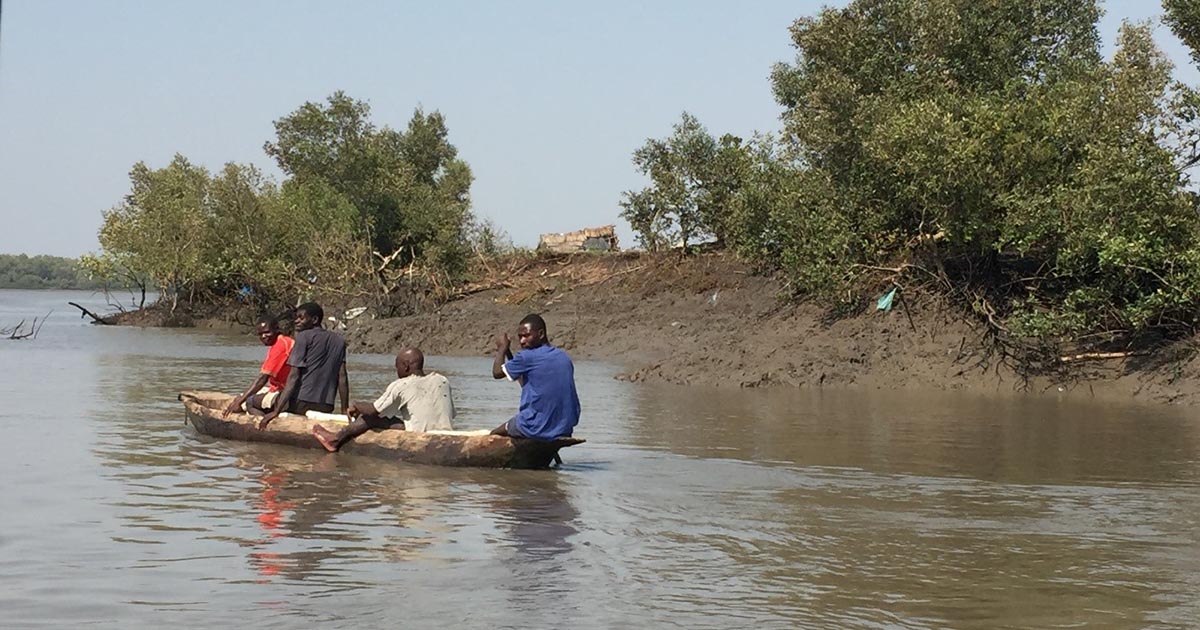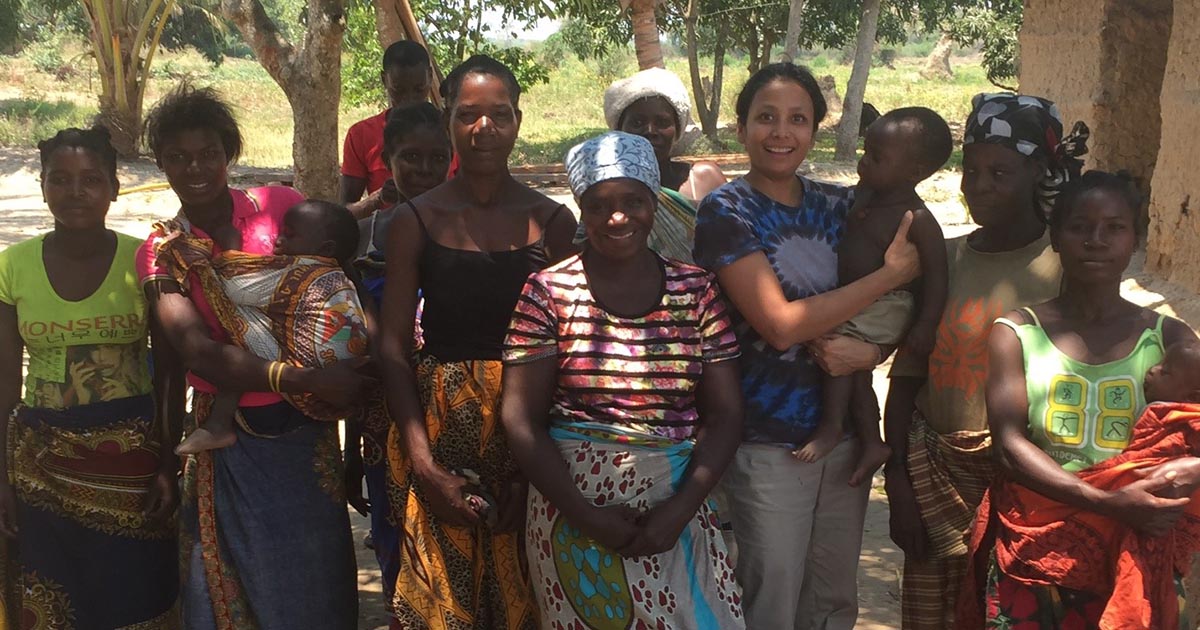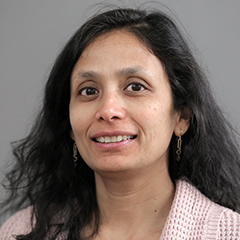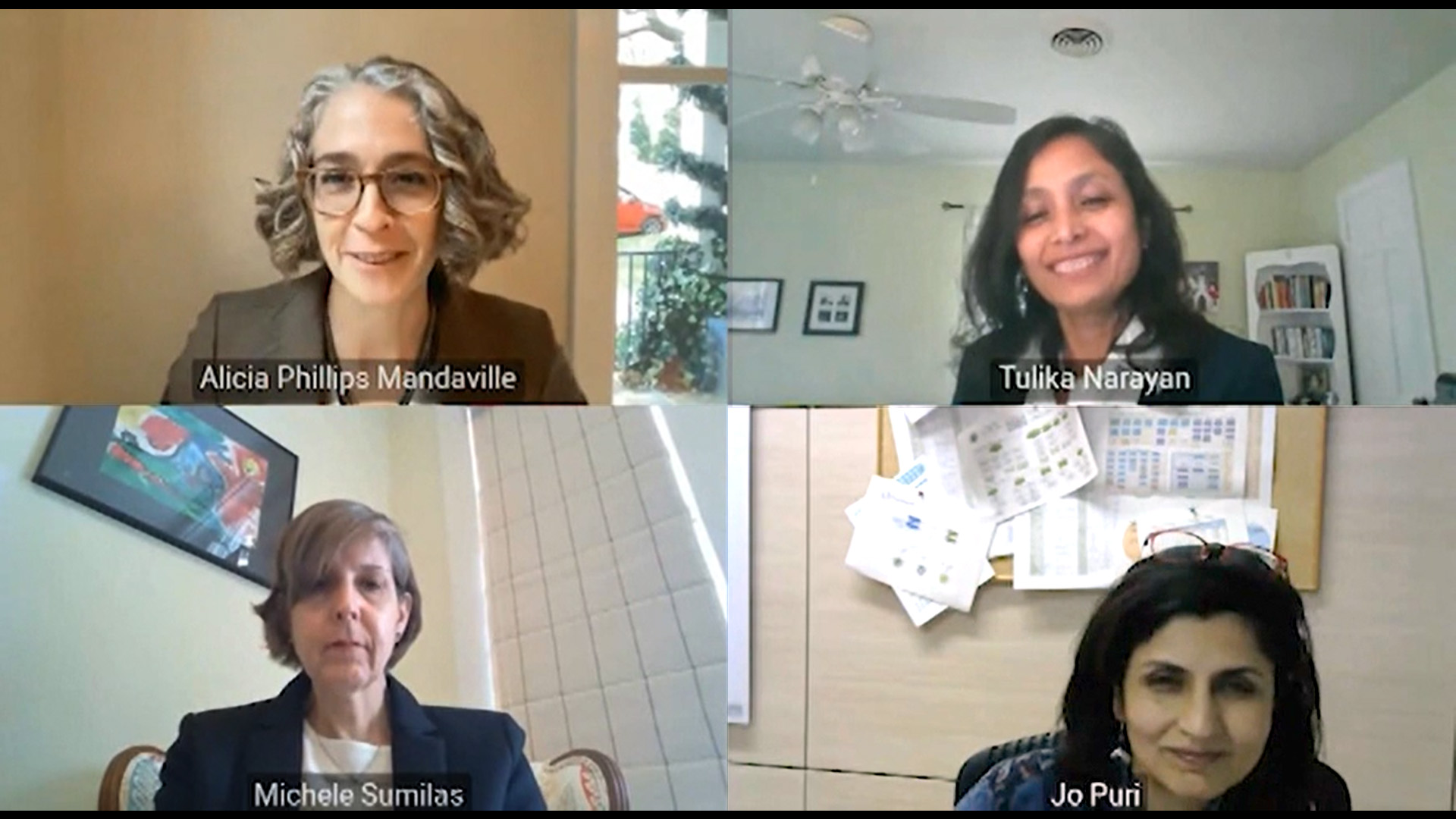I grew up in India, spending most of the year in Delhi and summers in a remote village without electricity and running water. This experience made me very aware of inequity, but not in the way that might immediately come to mind. The biggest contrast wasn’t between Delhi and the village, but between the haves and have nots in Delhi. When you see these inequities daily, you can either become inured to them, or resolve to do something about them. I knew early on in my life that I wanted to find a way to combine my interest in math and analytics to focus on how to address inequity, especially as it concerned a critical issue like food security.
When I began my career in economics more than two decades ago, I was still driven by the desire to address poverty and inequality by looking at their multisectoral influences. As I studied agriculture and resource economics in developing countries, I came to understand that climate change was at the center of these two core interests. Inequality exacerbates climate change and climate change exacerbates inequality. For any researcher aspiring to help address a problem that spans multiple policy areas and sectors, there is no challenge more important than taking on this global crisis that threatens human health, livelihoods, and infrastructure.
Economists are often encouraged to specialize in a particular field, but I was always interested in looking at these problems through a multi-sectoral lens. You really can't solve a problem like hunger or food access by just looking at agriculture, because the issues are inextricably linked—especially in the developing world. I love working at the intersection of agriculture, nutrition, health, and climate change because the problems are interconnected and can be addressed by digging deeper to uncover the root cause of problems. This idea is especially important when working in developing countries because we must constantly balance the desire for positive impact with the knowledge that progress in one dimension can’t come at the expense of another. In my earlier roles, I worked on a project for which we provided economic analysis and modeling in support of governments on a low-emissions growth trajectory. Low emissions and growth haven’t always gone hand in hand, so we wanted to help the governments understand how to achieve a balance between the two goals. Growth is important—it can improve the lives of a country’s people by providing jobs. But climate change affects everyone across the globe. So how can our work foster growth while reducing emissions? To answer that question, we conduct economic analysis on the potential benefits of various options.
When I think about how climate change is addressed in the development sector, I find activities can be broken down into two streams of work. One stream is mitigation, illustrated by the example above, where we’re faced with a bad outcome like increased emissions and use the tools available to us as economists to provide options that limit adverse impacts. Mitigation is necessary, because climate change is underway, so people are already affected by these impacts. But while we can and should continue to work on mitigation strategies, we also need to help people and communities build resilience and encourage adaptations that will enable them to thrive in the face of climate change. In a major development at the recent United Nations Climate Change Conference of the Parties meeting in Glasgow, Scotland, adaptation financing got a major boost: developed countries pledged to double the funding provided to developing countries for adaptation by 2025, making for an annual contribution of about US $40 billion.
In Mozambique, for example, we helped build resilience and encourage adaptation after studying the benefits of investing in mangrove restoration. Mangroves provide coastal communities with greater protection from storm surges and rising sea levels, help increase fish production by hosting certain species, and can be used as fuel wood. Mangroves also sequester carbon, which helps in attaining mitigation goals.

Men in search of mangrove wood for charcoal along coastal Quelimane, Mozambique.
Although mangrove restoration offers a host of benefits, there is greater immediate financial benefit from cutting down mangroves for charcoal and wood. This means that it is likely that restoration efforts will not endure without regulation and enforcement. More must be done to find and implement innovative solutions. Donors are funding a great deal of work on the ground, trying to improve citizens’ resilience to climate, provide climate information, and help them with climate adaptation and mitigation. But to figure out which options are ideal and which options are likely to lead to suboptimal outcomes, or which options will face the most behavioral constraints, it’s necessary to conduct upfront and ongoing analysis to ensure that dollars go to the right place.
In the course of analysis, we bring in all available data to determine which options offer the highest return on investment—while being careful to recognize how pushing a policy lever in one area may lead to adverse impacts in another. The evidence may point to a good policy option, but if there are significant behavioral barriers to implementing the policy, it’s not going to be worthwhile unless there is investment in addressing those barriers. Sometimes even the best upfront analysis fails to provide the answers we need, because we really need be in the field to understand how people are responding.
We have a lot of work to do to help policymakers and donors understand how other sectors influence climate outcomes. Many agencies invest specifically in climate change, engaging in significant adaptation and mitigation activities—but unless they are also using a climate lens through which to view their investments in other sectors like energy and housing, it’s unlikely they’ll solve one issue without making another worse. Because our work cuts across so many sectors, we can use the knowledge we’ve gained to shed light on the role that climate plays in various aspects of our lives.
During the course of the last decade, Mathematica has acquired expertise in areas such as predictive analytics, machine learning, and access to big data, which are particularly relevant for climate work. Climate forecasting relies on big data, such as large amounts of weather information collected over many years. Using these data, we can not only get a snapshot of the past but forecast what the world will look like in the future, based on whether specific changes are made. Predictive analytics can identify likely impacts on different types of crops based on current climate forecasts, informing how farmers, communities, governments, and outside funders plan for the future. We’re already doing some of this work with the Millennium Challenge Corporation, using remote sensing technology to determine crop use. This requires a thorough understanding of the technology, ample data analytics skills, and an appreciation of the issues farmers are facing. I am fortunate to be surrounded by colleagues who bring these critical skills to the table as we work on this critical issue on behalf of the global community, and it’s an exciting time to be an agriculture development economist.



